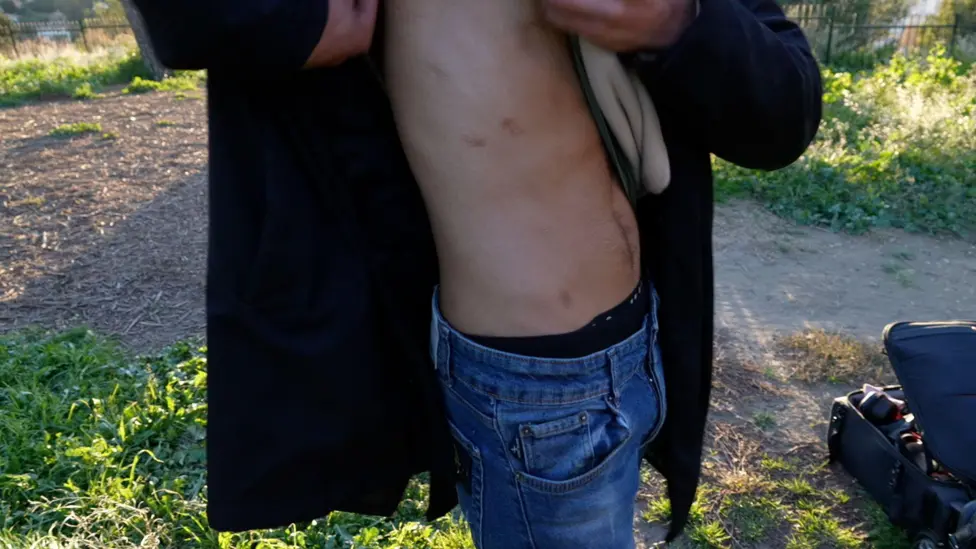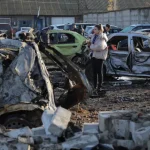One of the first things the rebels in Syria did, after they seized the capital, Damascus, on Sunday, was to release the prisoners from the cells of the notorious Saydnaya Prison. Nicknamed “the human slaughterhouse” by Amnesty International, Saydnaya was a place where humanitarian groups say Syrian authorities under President Bashar Assadsystematically tortured and executed thousands of civilians.
Human rights advocate and former detainee Omar Alshogre explained to DW: “Documented detainees in Syria before the fall of the regime used to be around 139,000. I believe it’s over 200,000 people who have been in these cells, tortured on a daily basis.”
“We are talking about hundreds of thousands of people who were detained and tortured over the decades, and that means many Syrians, almost every Syrian family lost someone or know someone who has been forcibly disappeared and people were never able to hear about them again,” Ibrahim al-Assil from the Middle East Institute told DW.
While many people are frantically searching for their loved ones thought to have been detained in Saydnaya, images and videos purportedly depicting freed prisoners have flooded the internet. However, not all of them are true. DW Fact check investigated the viral claims.
AI-generated image goes viral as a picture of Saydnaya prisoner
Claim: “This is one of the prisoners from Saydnaya Prison. A man is surprised to see a human face because some despicable person put him underground and decided to forget him in the hole,” reads the post on X with picture of a seemingly shocked man getting out from a hole in the ground.
DW Fact check: Fake.
The image doesn’t show a detainee of Saydnaya Prison. A reverse image search leads to another X-post of the image alongside a 5-second-long video showing a man crawling from the hole with a big spider in his hand. The videowas published on TikTok on December 3, 2024, and is labeled as AI-generated by its creator. The wide-open eyes of the man despite the bright light directed at him and the unnatural movements of his hand also indicate that the video was produced with the help of AI.
“Yes, everything is AI, c’mon,” reads the description of the TikTok account, which posts creepy AI-generated videos daily, many of them showing men and women with giant spiders and unknown creatures in the tunnels. The image from the video has no connection to the Saydnaya Prison in Syria.
Images and video from a museum in Vietnam misused to create a fake video about Saydnaya
Claim: An image showing an emaciated, long-haired man chained in a cell has gone viral on different social media platforms with a claim that the person is an inmate of the Saydnaya Prison. “At first glance, one would think this is a scene from a horror movie?! But in fact, it is Sidnaya prison in Damascus.”
DW Fact check: False.
The widely circulating image does not show a Saydnaya prisoner. Through a reverse image search we found a picture of the same chained man, taken in August 2008, on the British privately owned stock photography agency Alamy. The caption provided by the photographer reads: “A reconstruction of a cell commonly known as a tiger cage in the War Remnants Museum in Ho Chi Minh City, Vietnam.” There are more pictures of other wax figures in different cells by this photographer.
According to the results of the image reverse search, the viral image is a keyframe from an 11-seconds-long video allegedly showing Saydnaya Prison.
DW’s Fact check team compared this video with the online tour movie on the official YouTube channel of the War Remnants Museum in Ho Chi Minh City, Vietnam. Most pictures of the video purportedly showing Saydnaya Prison are taken from the online tour movie of the museum. The image of the long-haired chained man was integrated into the video, presumably using AI.
Claims of underground cells continue to spread, despite lack of evidence
Claim: A video shows a toddler trapped in underground cells in Saydnaya Prison.
The one-minute video, widely circulated on TikTok with over 2.7 million views, begins with a close-up shot of a toddler peering through a small opening in what appears to be rubble or debris, with one hand reaching out. This is followed by a satellite image of Saydnaya Prison, accompanied by a voiceover alleging that the prison contains hidden underground cells where detainees are trapped without food, water, or fresh air. The voiceover encourages viewers to share the video to raise international awareness.
Although the voiceover does not explicitly claim the presence of children in Saydnaya Prison, many of the more than 1,000 users commenting on the video interpreted it that way. Some expressed sadness and concern for the child’s fate.
DW Fact check: False.
This video of the toddler does not originate from Saydnaya Prison or any related incident. A reverse image search leads to longer video versions, still available online, revealing that the footage shows a child playing at home, not trapped under rubble.
The footage seems to originate from a now-deleted TikTok account where videos of the child were often posted.
This same footage has circulated in recent weeks with various false claims, including one suggesting that it shows a Gazan child trapped under rubble following an Israeli airstrike. Other accounts claimed the video was filmed in Syria. While it’s difficult to verify the exact time and location of the footage, it was uploaded weeks before recent developments involving Saydnaya Prison, proving it is unrelated.
Furthermore, claims of hidden underground cells at Saydnaya Prison have been debunked. On December 9, a team from the White Helmets — an opposition-run volunteer organization — conducted a thorough investigation of the prison using trained search dogs. In a statementpublished on social media, the organization announced that, after inspecting all entrances, exits, ventilation shafts, sewage systems, water pipes, electrical wiring, and surveillance systems, “no hidden or sealed areas were identified.”
While no credible evidence supports the claim about underground detainment cells in Saydnaya, posts replicating this claim continue to gain traction. For example, another post on December 10 features AI-generated imagery depicting a stark, multi-layered underground prison with overcrowded, dimly lit cells. The post urges viewers to share the content, calling it a “humanitarian duty.” However, neither the claims about the hidden cells nor the association with the toddler are supported by evidence.
Misleading claims after atrocities can undermine the truth
The false claims and manipulated imagery related to Saydnaya Prison go far beyond the specific cases we investigated. In addition to videos taken out of context, numerous unverified claims continue to circulate online.
In a verified video showing Syrians entering the prison, a child is briefly seen. Many have sharedstill images from that scene, saying it proves children are being detained in Saydnaya. However, it is not uncommon for toddlers to accompany their detained mothers in prisons, it remains unclear whether the child in the video was among the detainees or present with civilians entering the facility.
Spreading false information about atrocities not only undermines efforts to document and investigate them but also hinders accountability for perpetrators. Such misinformation can lead to a phenomenon known as atrocity denial, where the credibility of genuine human rights abuses is questioned, ultimately weakening justice efforts and obscuring the truth.
Emad Hassan and Claudia Dehn contributed to this report.
Edited by: Rachel Baig
Misleading claims about Syria’s Saydnaya Prison – DW – 12/12/2024





